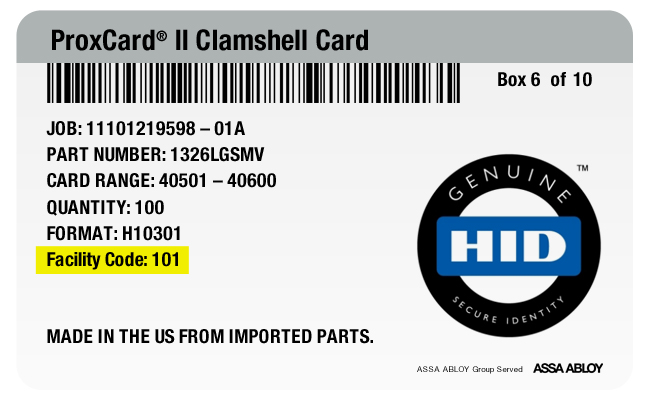Each access control system has a facility code, sometimes called a site code, that identifies your proximity system.
How Facility Codes Work
The facility code is usually a number between zero and 255. This number is assigned to your access control system. Along with the sequence number, the facility codes is programmed into each card.
This combination of numbers, the facility code and card sequence, is read by the card read and checked against a database of assigned cards. If both the codes match, the door opens.
Unlike a sequence number, which must be unique to each card, the facility code is used on all your cards. An access control card reader may be able to read multiple facility codes. Your business may want to create a rule for assigning facility codes if you use more than one, for example code 50 for a New York office and 80 for an Los Angeles office.
Because you can use more than one facility code in an access control system, it is not required that your new cards have the same code as the old ones. If you do order cards with a new facility code, however, you will have to add it to your access control system.
How to Find Your Facility Code
There are two easy ways to find your facility code.
- Look at the label on your last box of cards – your facility code will be listed there with your card information.

- Look at your access control software to see your facility code.
Formats with no Facility Codes
There are a few exceptions to a standard system that do not require facility codes.
32-bit cards have a much large card sequence range, going up to 1,073,741,823, and do not use a facility code. These cards are not very common.
37-bit cards (H10302 format) also do not use a facility code. These cards are part of the Corporate 1000 or CardTrax programs, and are generally used by large organziations with multiple locations and a high volume of cards used per year. Instead of a range of zero to 65,535, 37-bit cards have a range up to 34,359,738,367.

